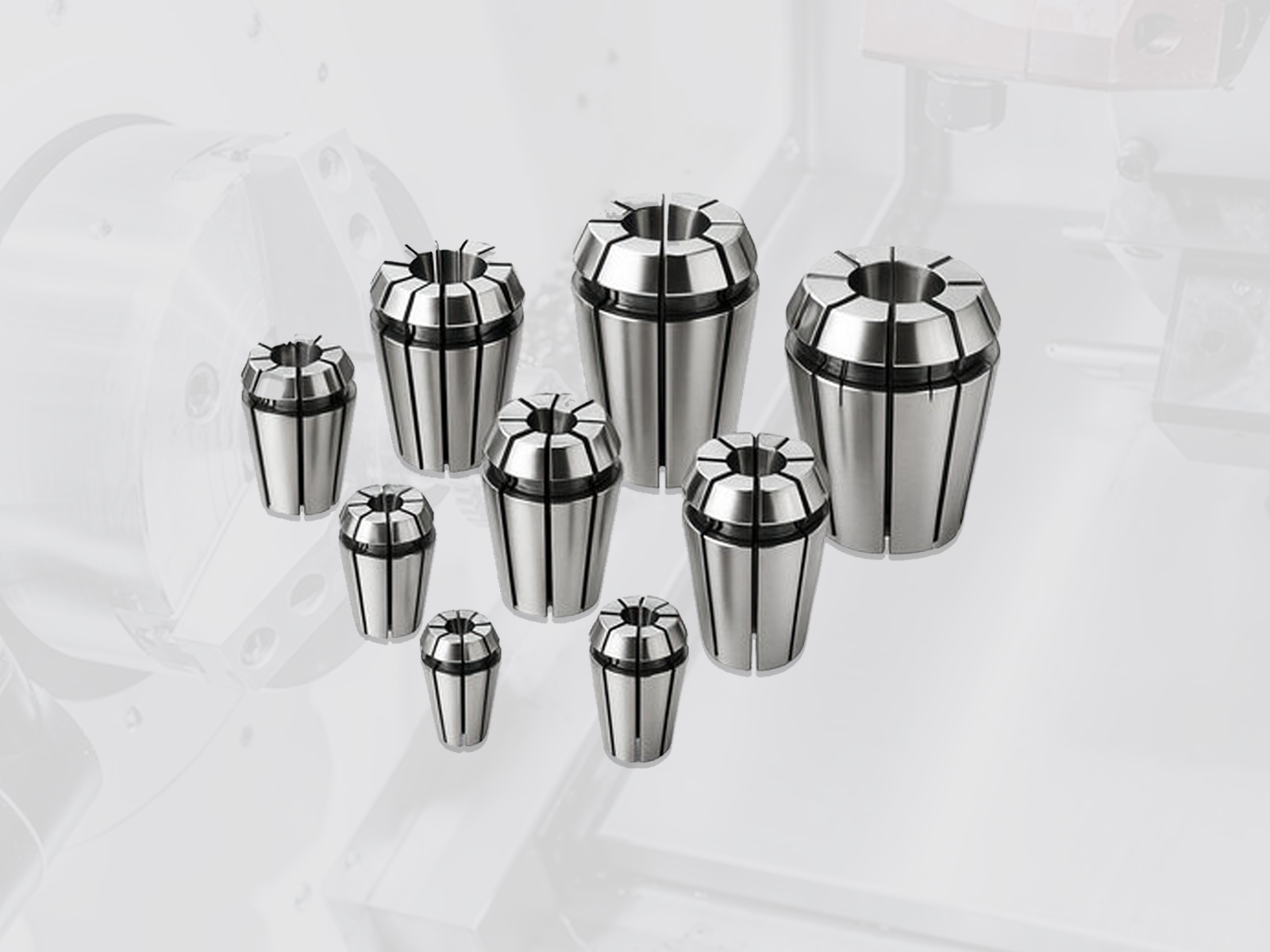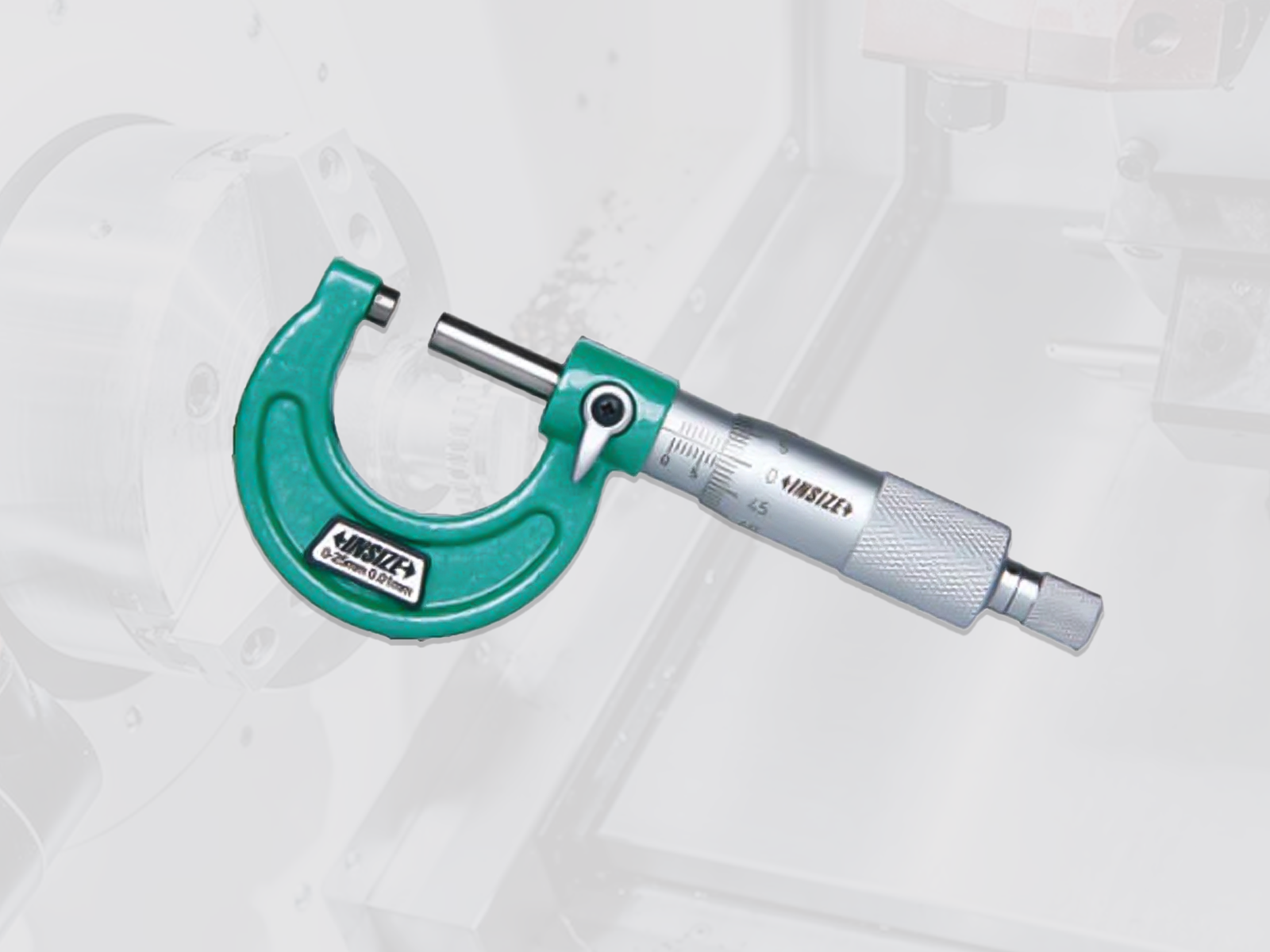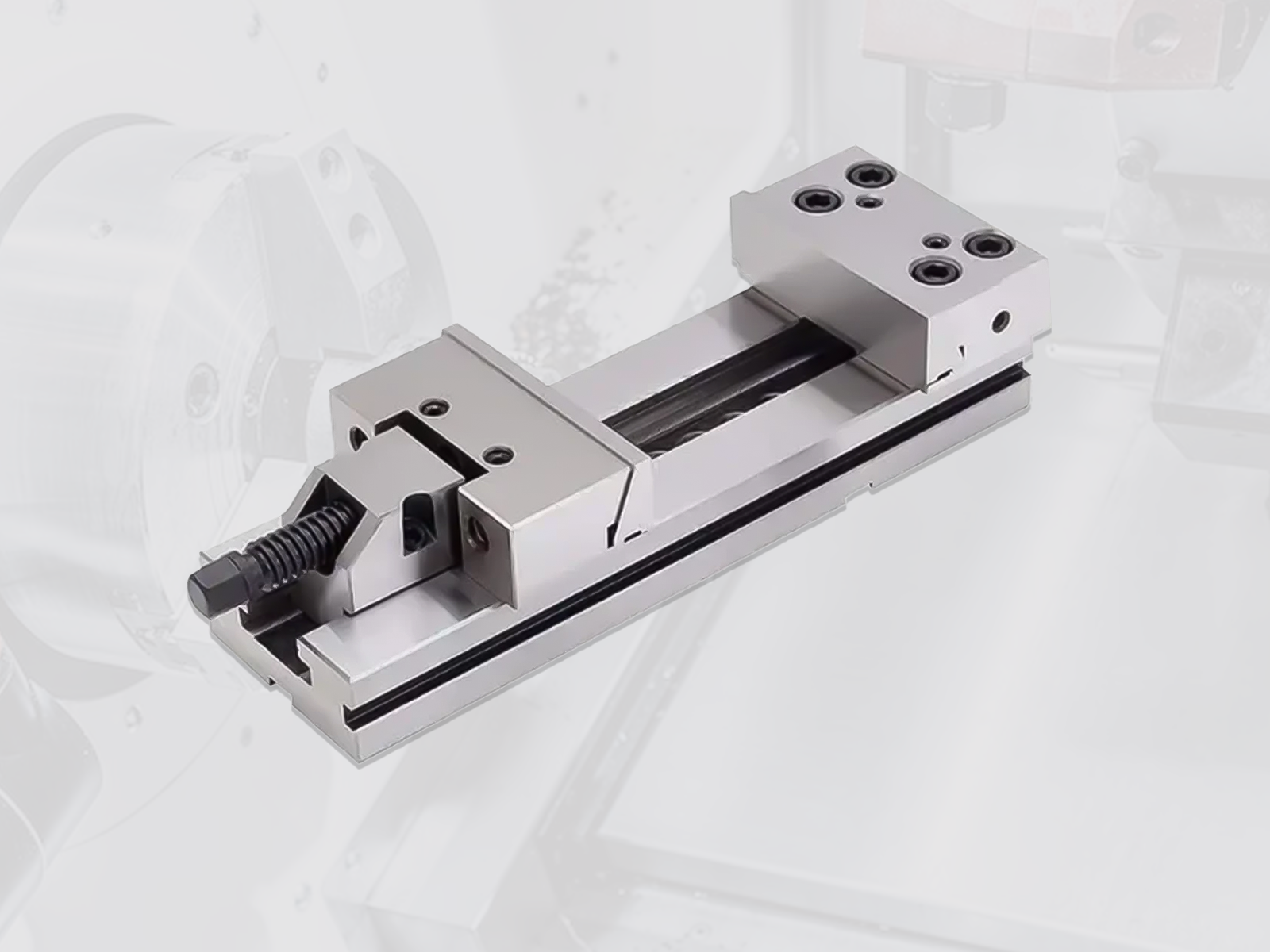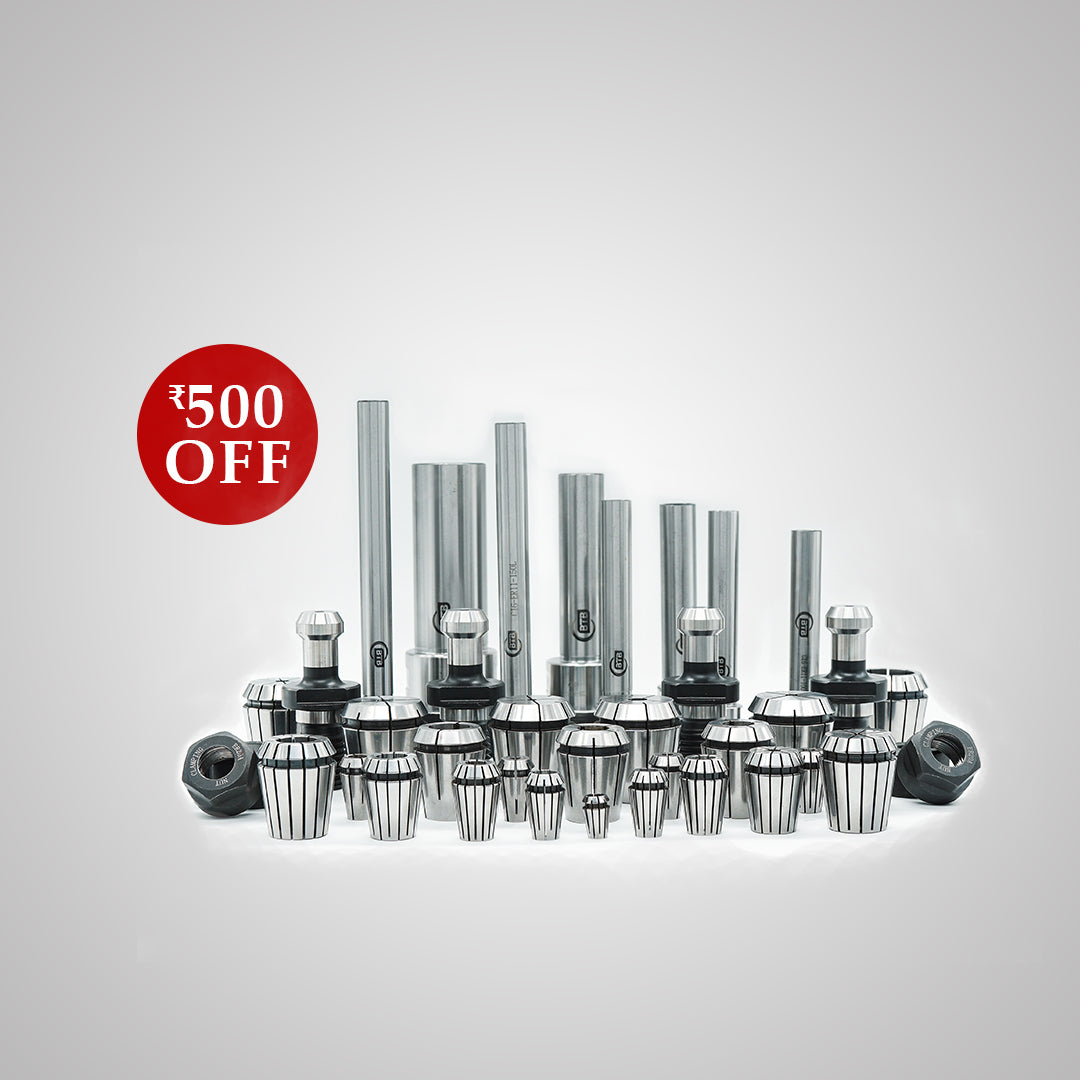ER Collet Guide: Sizes, Types, Applications & How They Work

What is an ER Collet?
In the world of CNC machining and toolholding, few components are as essential—or as versatile—as the ER collet. From milling to tapping and drilling, ER collets ensure that your tools stay secure and aligned during operation. But with so many types and sizes available, how do you choose the right one? This guide from Block to Box breaks down everything you need to know about ER collets—from sizing charts to applications—so you can make informed decisions and avoid costly mistakes.
Understanding ER Collets
What is a Spring Collet?
ER collets are a type of spring collet made of hardened spring steel. Their split sleeve design allows them to contract when tightened inside a collet nut, gripping the tool shank with high precision.
Elastic Design for Better Clamping
Thanks to their multi-slot, symmetrical design, ER collets offer elasticity. This gives them a wide clamping range—typically around 1mm—which means fewer collets are needed to accommodate various tool diameters.
Standardized Across ER Series (ER8 to ER50)
The ER system is standardized worldwide, with ER numbers like ER11, ER16, ER32 indicating the diameter of the opening in millimeters. This makes tool interchangeability and system upgrades far easier.
How ER Collets Work
Slotted Sleeve Mechanism
ER collets have slits running from the nose to the back, making them flexible. When inserted into the collet chuck and tightened with a nut, the collet compresses uniformly around the tool shank.
Clamping Action Explained
The nut exerts an axial force on the collet’s angled face, which is then translated into radial clamping pressure. This guarantees a tight grip with minimal runout.
Self-Releasing Functionality
One key advantage of ER collets is their self-release feature. When you loosen the nut, the collet automatically disengages from the tool, avoiding sticking or damage.
Key Features of ER Collets
-
Wide Clamping Range: Each ER collet can accommodate a 1mm range (e.g., 7–6mm).
-
High Concentricity: Runout accuracy up to 0.005mm with high-quality ER collets.
-
Tool Versatility: Can hold drills, endmills, reamers, taps, etc.
-
Cost Efficiency: Reduces the number of required collets.
Types and Sizes of ER Collets
Common ER Collet Sizes for CNC Machining
ER collets come in various sizes, each suited for specific machining tasks depending on the tool shank size, machine spindle, and application. Here’s a breakdown of the most commonly used ER collet sizes and their typical uses:
ER8
-
Size Range: Typically holds tools from 0.5 mm to 5 mm in diameter.
-
Applications:
-
Ideal for precision tasks such as engraving, jewelry-making, watch repair, and PCB milling.
-
Common in small desktop CNCs or engraving machines.
-
Advantages: Extremely compact and allows high-speed operations with small tools.
ER11
-
Size Range: Holds tool shanks from approximately 1 mm to 7 mm.
-
Applications:
-
Great for light-duty machining or where space is restricted.
-
Used in engraving, small part milling, and micro-tooling.
-
Advantages: Offers a balance between precision and compactness; fits into spindles with limited room.
ER16 / ER20 / ER25
-
Size Range:
-
ER16: ~1 mm to 10 mm
-
ER20: ~1 mm to 13 mm
-
ER25: ~1.5 mm to 16 mm
-
Applications:
-
These are the most commonly used collets in general-purpose CNC machining.
-
Suitable for routing, milling, drilling, and light roughing.
-
Advantages:
-
Widely available and supported by many spindle systems.
-
Provide good clamping force and flexibility for a variety of tool sizes.
ER32
-
Size Range: Holds shanks from ~2 mm to 20 mm.
-
Applications:
-
Common in medium-duty operations such as mold-making, automotive parts, and aluminum machining.
-
Perfect for production environments needing a wide tool range.
-
Advantages: Offers a strong grip with relatively high torque transmission. Very versatile.
ER40 / ER50
-
Size Range:
-
ER40: ~3 mm to 26 mm
-
ER50: ~6 mm to 34 mm
-
Applications:
-
Used in heavy-duty milling, boring, and industrial-scale machining.
-
Ideal for large CNC milling centers and high horsepower spindles.
-
Advantages: Can hold large-diameter tools with high torque demands. Best for heavy material removal rates.
Mini ER vs Standard ER
Mini ER collets are shorter and have a smaller nut profile—ideal for machines with limited space. However, they have a smaller clamping range.
Metric vs Imperial Sizes
ER collets are available in both metric and imperial inner diameters. Make sure to choose based on your tool shank’s measurement unit.
ER Collet Size Chart (Quick Reference)
|
ER Size |
Clamping Range (mm) |
Max Capacity (mm) |
|
ER8 |
0.5 – 5.0 |
5.0 |
|
ER11 |
1.0 – 7.0 |
7.0 |
|
ER16 |
1.0 – 10.0 |
10.0 |
|
ER20 |
1.0 – 13.0 |
13.0 |
|
ER25 |
1.0 – 16.0 |
16.0 |
|
ER32 |
2.0 – 20.0 |
20.0 |
|
ER40 |
3.0 – 26.0 |
26.0 |
|
ER50 |
6.0 – 34.0 |
34.0 |
Applications of ER Collets
-
Milling: Hold endmills with secure grip and minimal vibration
-
Drilling: Use with twist drills for improved accuracy
-
Tapping: Specialized ER tap collets with square drive
-
Reaming: High concentricity ensures tight tolerances
-
CNC Turning: When combined with live tooling
Choosing the Right ER Collet
Factors to Consider
-
Tool Shank Diameter: Match tool to the midpoint of clamping range
-
Machine RPM: Ensure collet and nut are rated for your spindle speed
-
Material Hardness: Use stronger collets for harder tool materials
ER Collet vs Other Collet Types
|
Feature |
ER Collet |
R8 Collet |
TG Collet |
|
Clamping Range |
Wide |
Narrow |
Moderate |
|
Accuracy |
High |
Moderate |
High |
|
Versatility |
Very High |
Low |
Medium |
|
Self-Release |
Yes |
No |
No |
Maintenance & Best Practices
-
Clean After Every Use: Prevent chip and debris buildup
-
Avoid Over-Tightening: Can damage the collet and reduce accuracy
-
Inspect for Wear: Look for cracks or loss of spring tension
-
Use Manufacturer-Specified Torque: Tighten using torque wrenches for consistency
Conclusion: Why ER Collets Are the Industry Standard
ER collets offer unmatched flexibility, accuracy, and cost-effectiveness for tool holding across CNC applications. Whether you're a machinist working with high-speed mills or a workshop using manual lathes, choosing the right ER collet system can significantly enhance performance, reduce tooling errors, and improve productivity.
What is an ER collet used for?
ER collets are used to hold cutting tools like endmills, drills, taps, and reamers securely in CNC and manual machining operations.
What are the different types of ER collets?
The types vary by size (ER8 to ER50) and form (standard vs mini). Some are designed specifically for tapping or high-speed applications.
How do I know which ER collet size to use?
Choose a collet where the tool shank diameter is close to the midpoint of the clamping range. Refer to a size chart to avoid slippage or poor accuracy.
What is the difference between ER16 and ER32?
ER32 is larger, has a wider clamping range, and is used for heavier-duty operations compared to ER16.
Can I use ER collets for tapping?
Yes, but use ER tap collets with square drive ends to accommodate the tap’s back-end geometry.
Are ER collets interchangeable between brands?
Yes, most ER collets conform to DIN/ISO standards, making them interchangeable as long as the size is the same.
How tight should an ER collet be?
Use the recommended torque for your specific ER nut. Over-tightening can reduce accuracy and damage the collet.
What does the "ER" stand for?
ER comes from the original manufacturer Rego-Fix's designation—"Elastic Rego"—signifying elastic spring collets.
Do ER collets work for both metric and imperial tools?
Yes, just choose the appropriate size that matches your tool shank.
Why won’t my ER collet release the tool?
It may be stuck due to over-tightening or debris. Loosen the nut completely and gently tap it to release the collet.
Read More
-

, by Marketing Team ER Collet Guide: Sizes, Types, Applications & How They Work
-

, by Marketing Team Micrometer Guide: Types, Usage, Reading & Tips for Precision
-

, by Marketing Team CNC Fixture Design Guide | Types, Components & Tips for Machining




